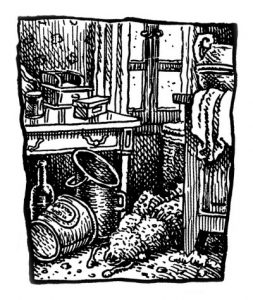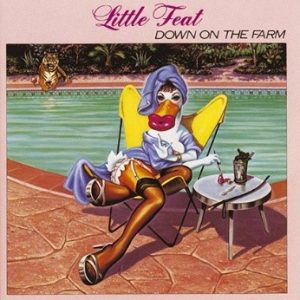By Tony Attwood
I am sure someone somewhere has recreated Maggie’s Farm and done something totally different with the song, but from the cover versions I’ve been listening to, the main thrust of the musicians’ ideas seems to be play it fast, play it loud, belt it out.
But imagine it as a soft lilting melody, or maybe with a multiple set of chord changes rather than that one chord that dominates most of the song.
And maybe it has been tried like that and I’ve just not found the recording. Or maybe it simply can’t be made to work.
Linda Gayle taunts us for three seconds with the thought that maybe this will be a totally revised version, but no, everything about apart from the in-between verse instrumental break, is much the same. It’s a belter. But otherwise…
Zero Prophet know the message and do vary both the vocal line and the accompaniment and I like the idea but even with the lyrical changes and extended verses… well yes it is different, but somehow it doesn’t hold me completely.
The Blues Band go back to the basics of the song much more, just changing the pulse to make it a standard driving force, then adding the guitar to manipulate the end of each verse.
That little instrumental pattern which appears at the end of each and then after a new guitar lick all add to the entertainment, and it’s fun, so the best of the versions tried so far.
There’s no mistaking the metallic feel of Chicken Diamond and they know that we know the lyrics by heart. I’m not sure I want to play it more than once but it was fun while it lasted, even if it is minimalist.
Jimmy Vivino taunts us with an interesting instrumental introduction, and the “no no more” vocals gives us some variety. But after a verse we’ve more or less got it, and there seems nowhere else to go.
So to David Grisman and co who do give a totally new feel. It’s so simple – let’s use a banjo rather than an electric guitar. It somehow feels very authentic, as if it were composed long before Bob actually wrote it.
And the authenticity is kept by not changing the delivery at all. What could have worked is the introduction of a folk violin part after the first verse, playing a counter melody. In the end the promise of the new sound was not delivered, and there we were, hearing the same song again.
And the Dylan Cover a Day series
-
- The song with numbers in the title.
- Ain’t Talkin
- All I really want to do
- Angelina
- Apple Suckling and Are you Ready.
- As I went out one morning
- Ballad for a Friend
- Ballad in Plain D
- Ballad of a thin man
- Frankie Lee and Judas Priest
- The ballad of Hollis Brown
- Beyond here lies nothing
- Blind Willie McTell
- Black Crow Blues (more fun than you might recall)
- An unexpected cover of “Black Diamond Bay”
- Blowin in the wind as never before
- Bob Dylan’s Dream
- You will not believe this… 115th Dream revisited
- Boots of Spanish leather
- Born in Time
- Buckets of Rain
- Can you please crawl out your window
- Can’t wait
- Changing of the Guard
- Chimes of Freedom
- Country Pie
- Crash on the Levee
- Dark Eyes
- Dear Landlord
- Desolation Row as never ever before (twice)
- Dignity.
- Dirge
- Don’t fall apart on me tonight.
- Don’t think twice
- Down along the cove
- Drifter’s Escape
- Duquesne Whistle
- Farewell Angelina
- Foot of Pride and Forever Young
- Fourth Time Around
- From a Buick 6
- Gates of Eden
- Gotta Serve Somebody
- Hard Rain’s a-gonna Fall.
- 42 Heart of Mine
- 43: High Water
- 44: Highway 61.5
- 45: Hurricane
- 46: I am a lonesome hobo
- 47: I believe in you
- 48: I contain multitudes
- 49: I don’t believe you.
- 50: I love you too much
- 51: I pity the poor immigrant.
- 52: I shall be released
- 53: I threw it all away
- 54: I want you
- 55: I was young when I left home
- 56: I’ll remember you
- 57: Idiot Wind and More idiot wind
- 58: If not for you, and a rant against prosody
- 59: A Dylan cover a Day: If you Gotta Go, please go and do something different
- 60: If you see her say hello
- 61: Dylan cover a day: I’ll be your baby tonight
- 62: I’m not there.
- 63: In the Summertime, Is your love and an amazing Isis
- 64: It ain’t me babe
- 65: It takes a lot to laugh
- 66: It’s all over now Baby Blue
- 67: It’s all right ma
- 68: Just Like a Woman
- 69: Knocking on Heaven’s Door
- 70: Lay down your weary tune
- 71: Lay Lady Lay
- 72: Dylan Cover a Day 72: Lenny Bruce
- 73: That brand new leopard skin pill box hat
- 74: Lily, Rosemary and the Jack of Hearts
- 75: Dylan Cover a Day: License to kill
- 76: Like a Rolling Stone
- 77: Love is just a four letter word
- 78: Love Sick






